Teaching the origin insertion action of muscles doesn’t have to be stale and boring. It can be a challenging topic to learn for students, so making it more relatable is key. If you have been on the hunt for ways to make learning this topic more engaging, then stay tuned for an unusual way to teach muscle origin insertion action.
Looking for more ways to engage your anatomy students? Then check out The Ultimate Guide to Engaging Students to Learn Anatomy | 7 Secrets to Implement Today
Muscles with Origin Insertion and Action
There are over 600 muscles in the human body and each one has an origin, insertion, and action. I chose 20 of the most recognizable and major muscles for students to learn the origin, insertion, and action for. The 20 muscles I include are as followed:
- Latissimus dorsi
- Pectoralis major
- Rectus femoris
- External oblique
- Masseter
- Trapezius
- Gracilis
- Orbicularis oculi
- Sternocleidomastoid
- Soleus
- Orbicularis oris
- Tibialis anterior
- Serratus anterior
- Rectus abdominis
- Biceps brachii
- Gastrocnemius
- Deltoid
- Biceps femoris
- Triceps brachii
- Gluteus maximus
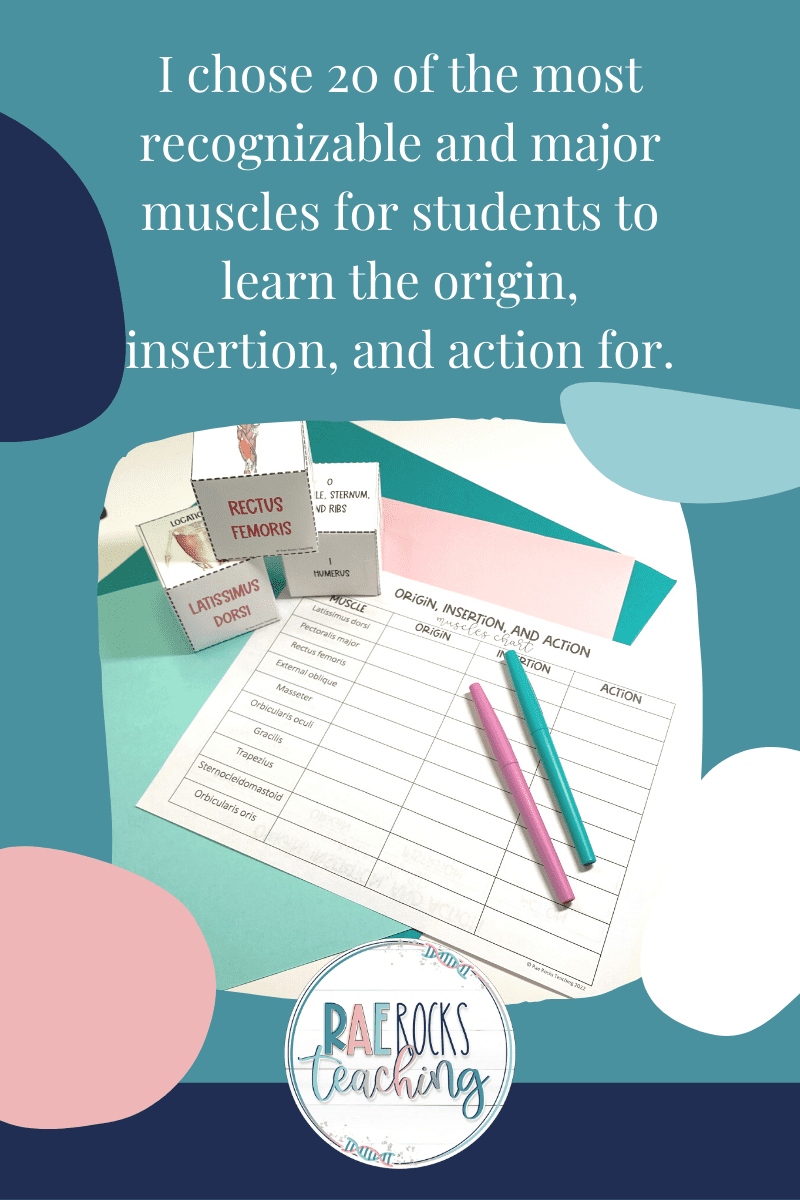
-
Save
Prior to learning the origin insertion action of muscles, students will have already been introduced to the muscular system. I have them label specific muscles on a diagram so they are somewhat familiar with these 20 before we start the activity.
Muscle Origin Insertion Action Cubes
I started using cubes to help students learn the muscle origin insertion and actions because it was a fun and different way to get my students involved. Rote memorization of this topic was NOT working so I got creative. I decided to try using the cubes for this concept and it worked great. Students were still learning the origin, insertion, and actions using a hands-on approach.
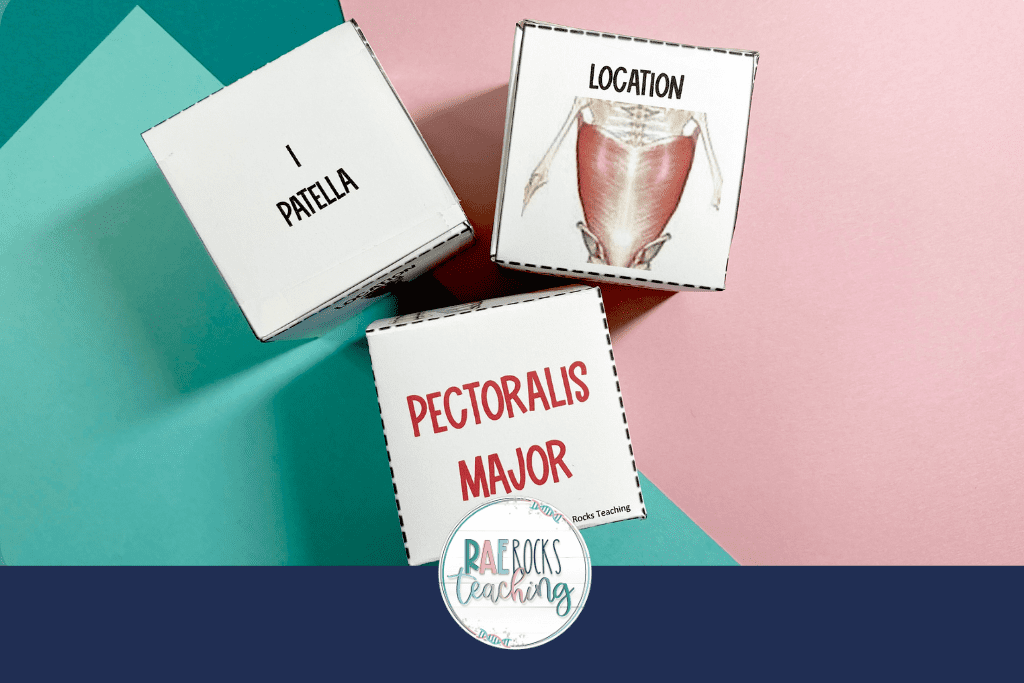
-
Save
The cubes provide a tactile object for students to touch and see each muscle individually. Since cubes have 6 sides, this worked out perfectly for what I wanted to include on each side.
- 1 contains the name of the muscle
- 2 contains the origin of the muscle
- 3 contains the insertion of the muscle
- 4 contains the action of the muscle
- 5 contains an example of the muscle doing something
- 6 contains a picture of the location of the muscle
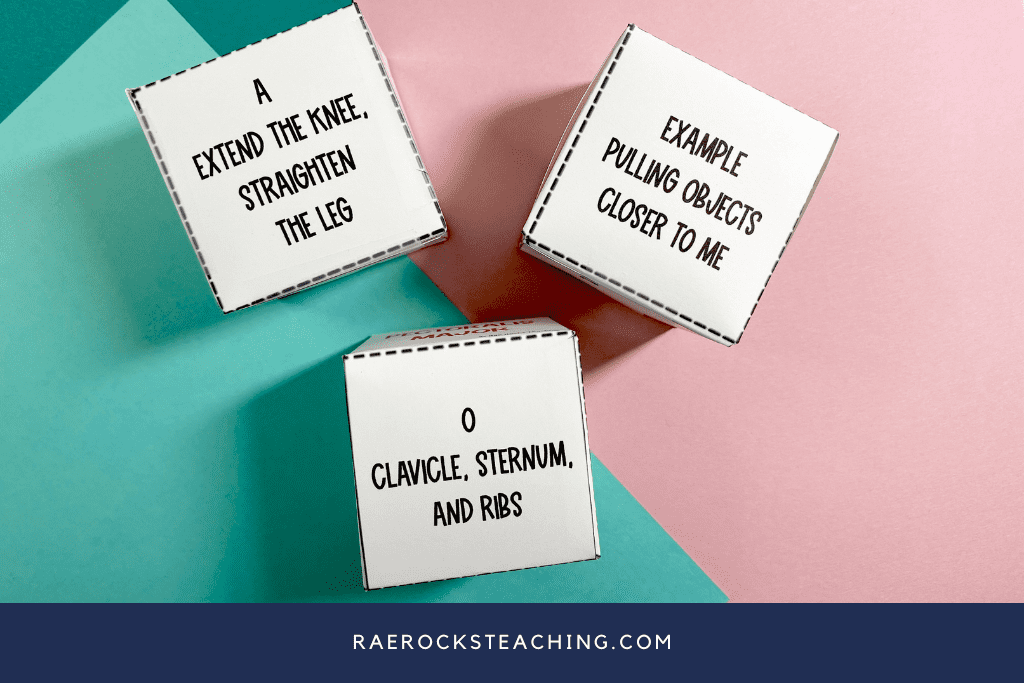
-
Save
Students complete the muscles origin insertions and actions table while investigating each muscle cube.
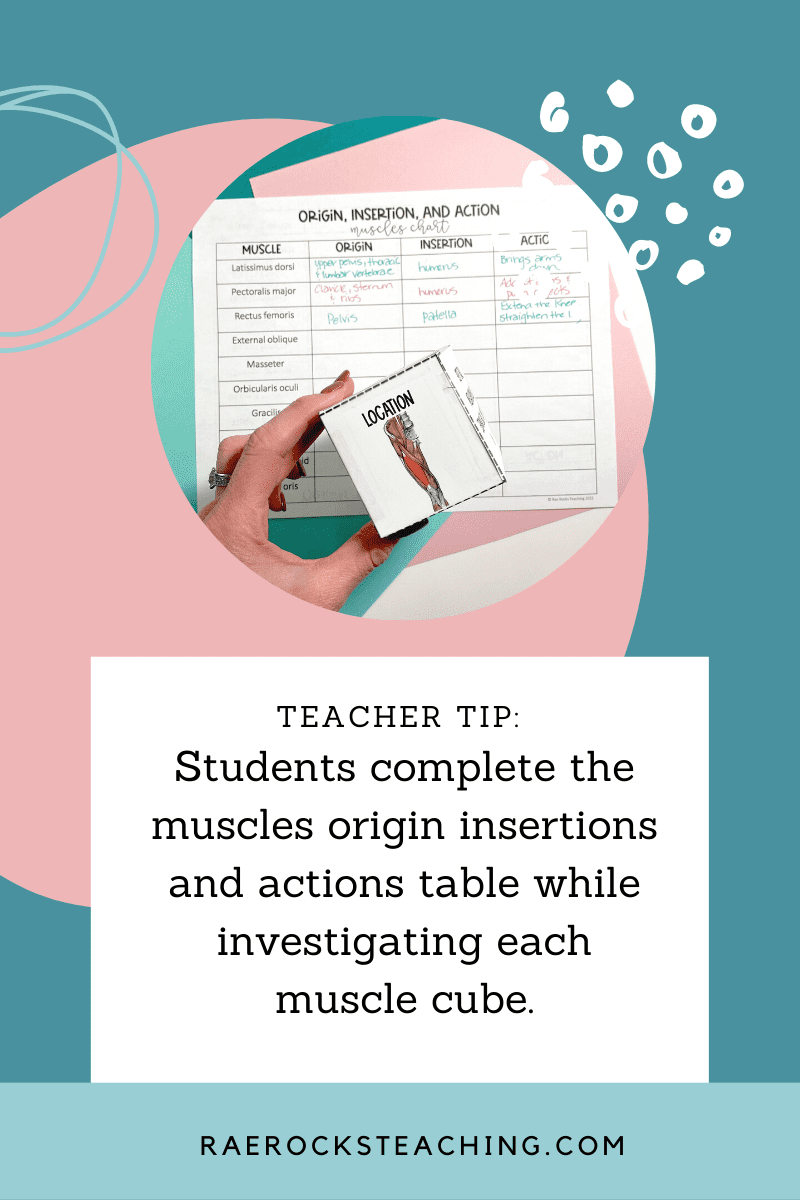
-
Save
Ways to Use the Muscle Origin Insertion Action Cubes
Learning the Muscles
One | Stations are my favorite way to introduce students to topics. I spread out the 20 muscle cubes around my lab stations and have them numbered. At each cube station, I also have the definitions of what origin, insertion, and action. Most of the time I will let students choose their own partner, however, when I have had a particularly rowdy class, I choose their partners for them. I will set a timer for about 3-4 minutes at each station. Students must stay at the station until the timer runs out, then they move to the next station. If using a timer is not your thing, then you can have students move through each of the 20 station cubes at their own pace. This is great if you have smaller class sizes. Students are completing their muscle origins insertions and actions table as they progress. Bonus activity: I get the students to “ACT” out the actions at each station too. This brings in a kinesthetic component that can help students make connections.
Two | You could have students stay at their desks and rotate the cubes if stations are not feasible in your classroom. This would be better suited for classes that are a bit on the wild side or classrooms that are small with no added lab space. Simply have students pass the cubes to the next table either on a timer or when they have completed that muscle. Acting out the muscle actions can be skipped if needed.
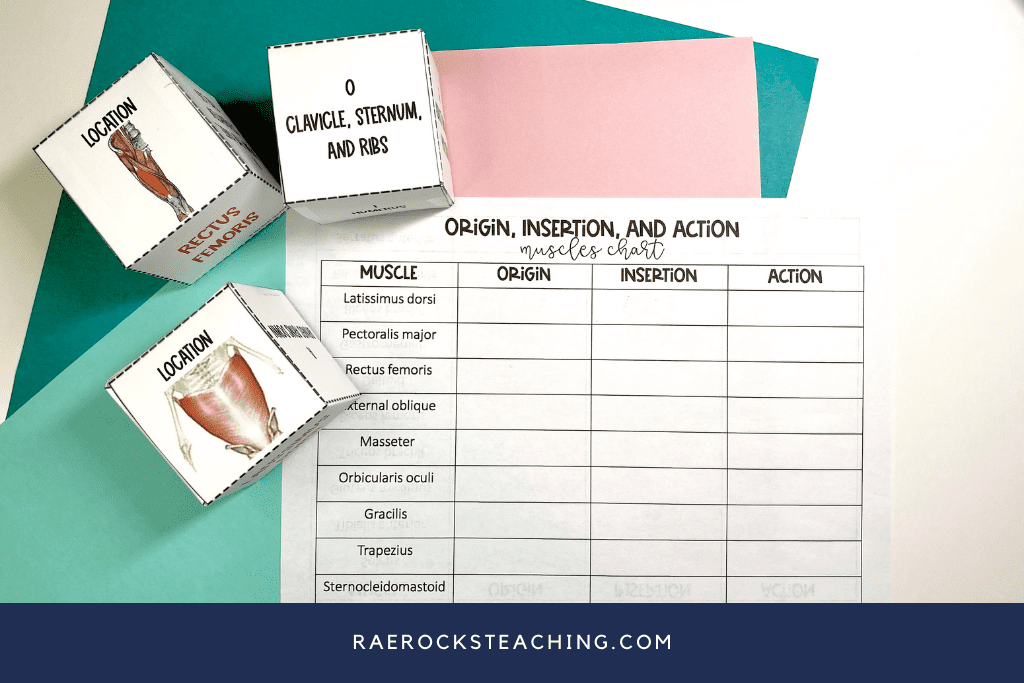
-
Save
Reviewing the Muscles
Three | If you have already covered muscle origins insertions and actions, you could use the cubes to have students quiz each other. They could call out the origin and insertion and the other partner could guess the muscle. Or, someone could give the muscle and the other person says the action. There are so many different variations that could be used in order for partners to use these for review.
Four | Lastly, students could use the muscle cubes to review independently. The day before tests for my classes are review days. I like to set up (you guessed it) more stations for review. The muscle cubes are one of the stations I use for them to review for the test.
Teaching the origin insertion action of muscles doesn’t need to be stressful or boring. Tell me your thoughts on using cubes and if you love it, then share this post with a friend. Your support is appreciated.
I would love to connect on IG or Facebook. I’m on TikTok too! Follow me and send me a DM with what you need more of because I’m here to help! If you are looking for even more inspiration, find me on Pinterest!

-
Save

-
Save
Don’t forget to grab your FREE COPY of The Ultimate Guide to Engage Students To Learn Anatomy | 7 Secrets To Implement Today
Wanna read more?
The Flipped Classroom and Technology You Need to Make it Successful for Anatomy
A Guaranteed Way to Teach the Flow of Blood Through the Heart Steps
The Most Exciting Endocrine System Function Project Idea for Anatomy
Share via:

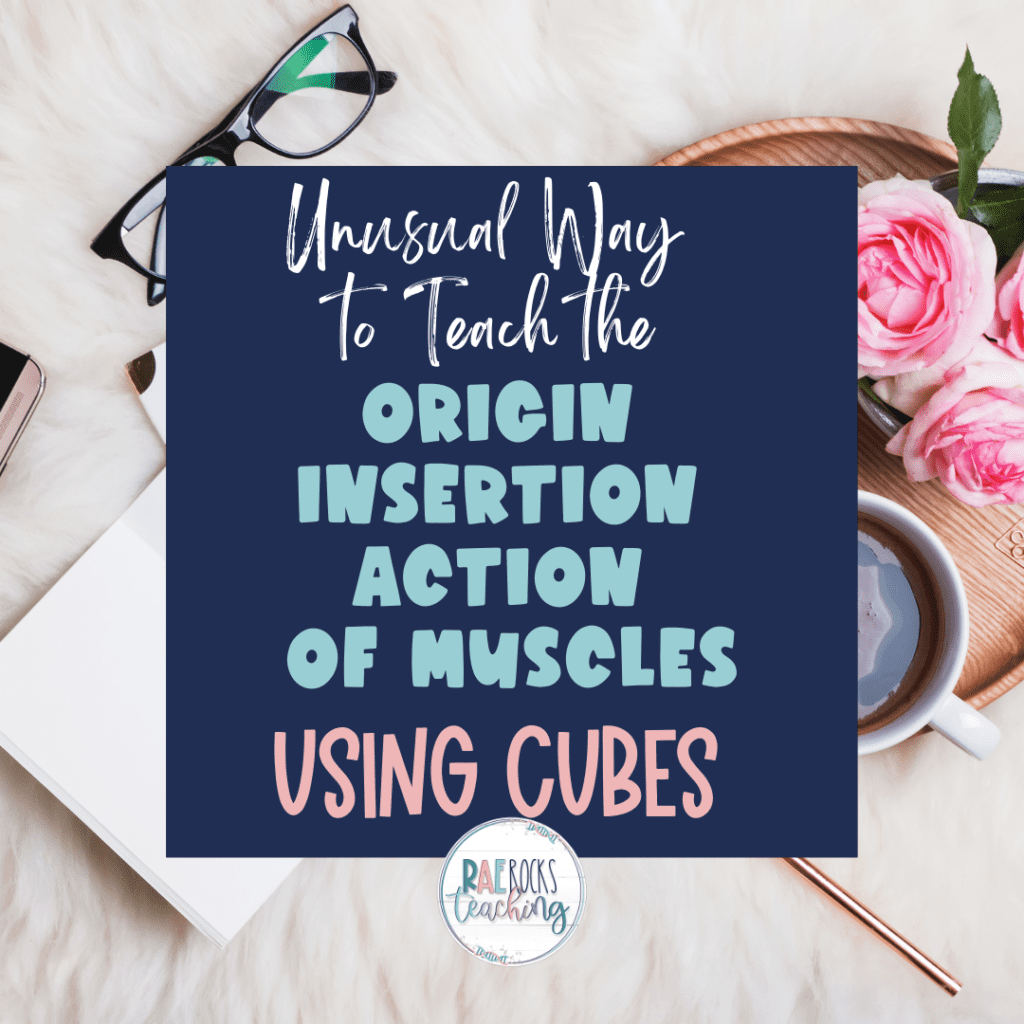
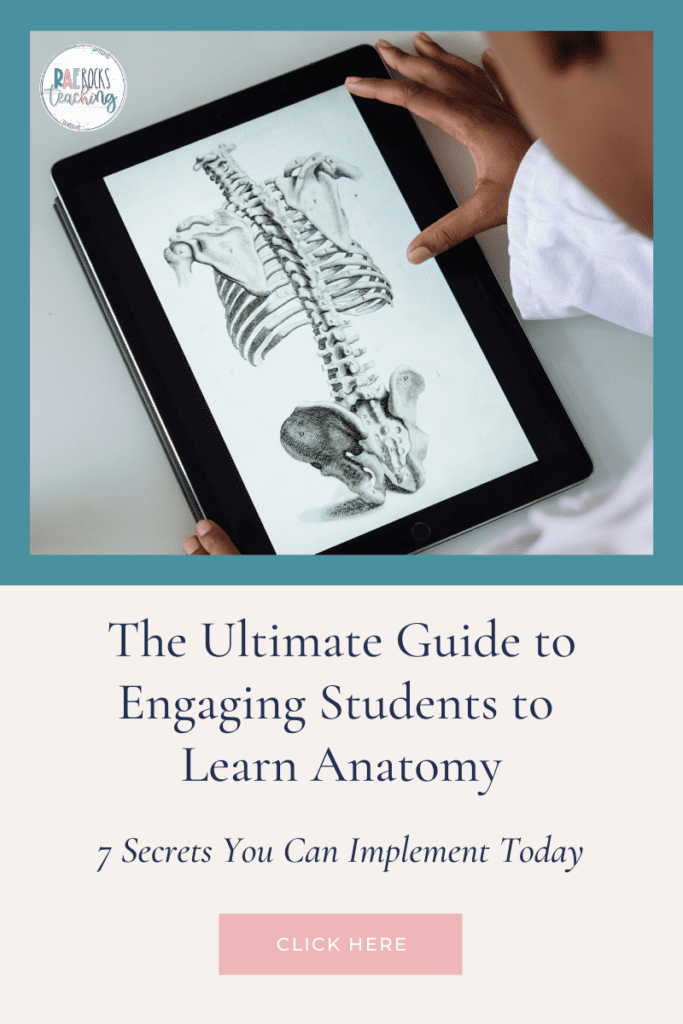







One Response